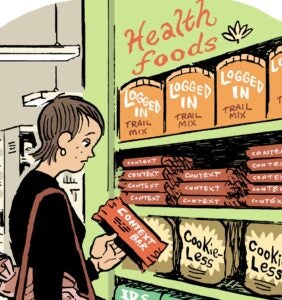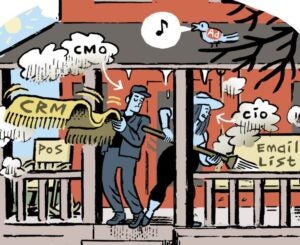The contrast between the New York Times and one of its chief competitors, The Washington Post, was stark this quarter.
In recent weeks, 250,000 WaPo digital subscribers – 10% of its base – defected after owner Jeff Bezos blocked the Post’s endorsement of Kamala Harris for president.
Meanwhile, NYT experienced a boom in its subscription business in Q3 thanks largely to the popularity of its non-news offerings, including daily games, like Wordle and Connections, and sports, cooking and lifestyle content, NYT CEO Meredith Kopit Levien told investors Monday.
The Times added around 260,000 net new digital subscribers compared to Q2, bringing its total to just over 11 million. Digital subscription revenue was up 14.2% YOY to $322.2 million, while the average revenue per user increased by 1.8% YOY to $9.45.
Digital ad revenue also increased, rising 8.8% YOY to $81.6 million, spurred by more programmatic and direct sales across NYT’s entire portfolio.
However, Monday wasn’t all good news for the Times. The NYT Tech Guild, which manages the technology that supports the paper’s election coverage, went on strike Monday – the day before the presidential election. The union is also applying pressure to other key growth drivers by asking NYT readers not to play its daily games or use its NYT Cooking app until the strike is over.
“We’ve known this [strike] was a possibility and have prepared for a range of scenarios,” NYT EVP and CFO William Bardeen told investors, adding that “the effects on our operations and results will depend on further developments.”
NYT’s Q3 subscriber growth also fell short of analyst expectations by about 20,000, which contributed to an 8% dip in its share price on Monday.
Diversifying beyond news
Still, the good news outweighed the bad for NYT this quarter.
Its strong Q3 reflects NYT’s efforts to “make journalism and products so valuable that people will seek them out, ask for them by name and form direct relationships and daily habits,” Kopit Levien said.
Beyond global news coverage, she said, people read the Times for information about their favorite NBA team, to play the daily games, get holiday shopping tips or plan Thanksgiving dinner.
That diversity of content is powering “multiple growing revenue streams” and makes the NYT “resilient in a changing media landscape and well positioned to become a larger and more profitable company,” she said. It’s also allowed NYT to broaden its ad offering and reach a wider set of marketers “even as some advertisers continue to avoid certain hard news topics,” she added.
The Times has been steadily introducing more ad inventory into its lifestyle coverage, the NYT Games app and within The Athletic, its sports vertical. Expect NYT to add even more ad opportunities in Games and sports content, Kopit Levien said.
Subscribers replacing referrals
NYT’s diversified portfolio is likewise boosting its growth in digital subscriptions.
It’s seen success upselling subscribers to individual properties, like Games, Cooking or The Athletic, to larger cross-portfolio subscription bundles. These subscribers generate more revenue per user as they graduate away from promotional subscription tiers, Bardeen said. Bundle subscribers now account for 46% of the subscriber base, which NYT expects to exceed 50% by the end of next year.
The NYT’s investment in its subscription business is also helping offset losses in referral traffic from social media and search, Kopit Levien said. The broader trend in downward traffic has been exacerbated as search platforms expand their use of generative AI and deprioritize linking to publisher sites, she said.
While “the platforms are sending less and less traffic to publishers” and have been doing so “consistently for close to two years,” she said, “our model is designed to build resilience” by developing direct relationships with readers and becoming part of their daily routines.
What of WaPo?
The Times placing so much stock in subscriptions makes the past few weeks of bad news for The Washington Post feel that much more dire in comparison.
Even before WaPo lost a quarter million subscribers following Bezos’s decision to block an endorsement of Harris, its subscriber base was already down 50% from the pandemic-era highs of 2020. And it had already lost $77 million in 2023, largely from a decline in paid digital subscriptions.
Through September of this year, WaPo added just 4,000 new digital subscribers – a drop in the bucket compared to the deluge of 250,000 canceled subscriptions.
In addition to subscribers fleeing WaPo, the exodus also included some high-profile resignations from its board and editorial teams.
Asked by an investor if NYT could expect to benefit from the “chaos and churn” at WaPo, Kopit Levien demurred somewhat.
“We take no joy in watching any other quality independent journalism institution go through anything difficult,” she said. “We are laser focused on our own strategy and our own growth trajectory, and we expect we’ll continue to attract subscribers from all sorts of places for all sorts of reasons. And I’ll leave it there.”


















